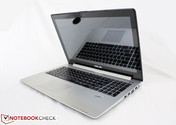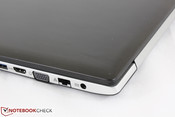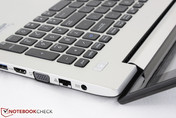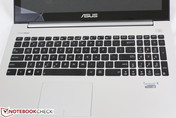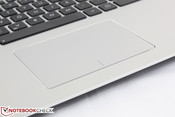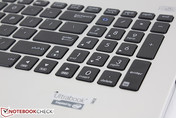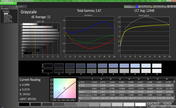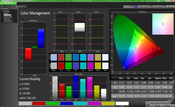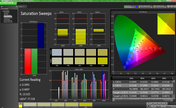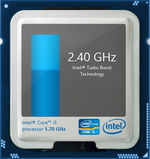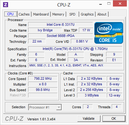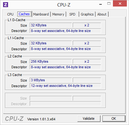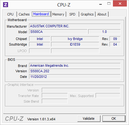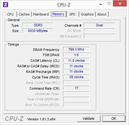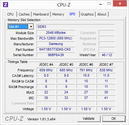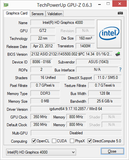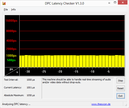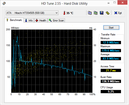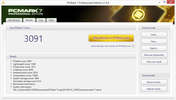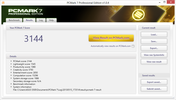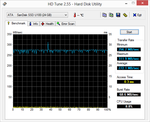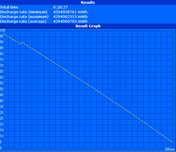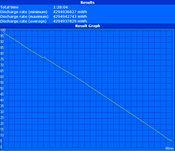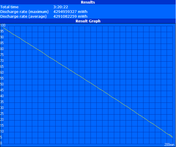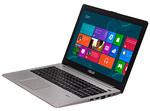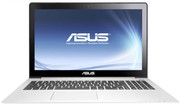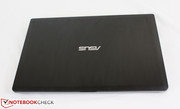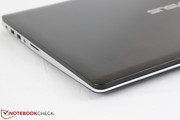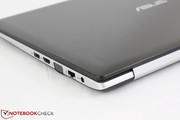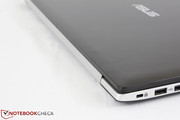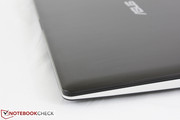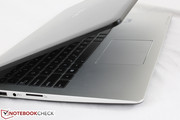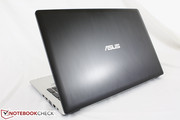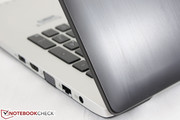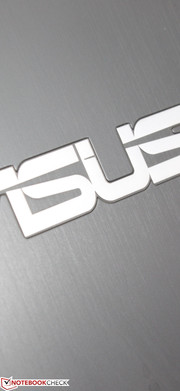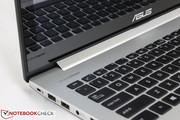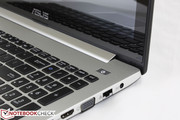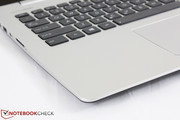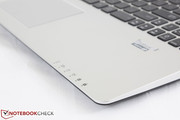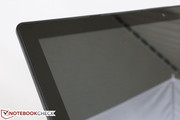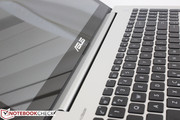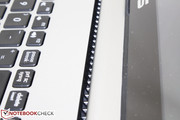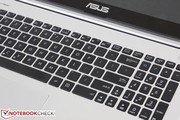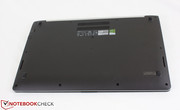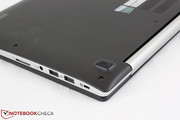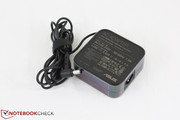Review Asus VivoBook S500CA-DS51T Ultrabook

Announced in March of this year, the Asus VivoBook S500CA promises to offer an affordable touch-powered Ultrabook with an Ivy Bridge CPU and a 1366 x 768 resolution display for only $699 as reviewed. The model joins the 11.6-inch S200E, 13.3-inch S300CA and 14-inch S400CA as part of a family of ultrathin VivoBook notebooks with Windows 8 touchscreen functionality.
The Asus in review includes an ULV 1.7 GHz Core i5-3317U with integrated HD 4000 graphics, 6 GB DDR3 RAM, a 720p display and a 500 GB HDD with 24 GB dedicated SSD cache. Those yearning for discrete graphics can opt for the VivoBook S550CM model with GeForce graphics. Regardless, the S500CA is one of the least expensive 15.6-inch touchscreen Ultrabooks in its size class and category. Find out in this review how this Asus fares against some of its closest competitors like the 15.6-inch Acer Aspire V5-571P and Sony Vaio T15 Touch.
Case
The S500CA continues to use the same silver chassis and brushed dark gray aluminum lid as the smaller S400, S300, and S200. This is certainly not a negative as it allows the Asus to be both thinner (21.5 mm) and lighter (2.1 kg) than a number of other 15.6-inch touchscreen notebooks like the Aspire V5-571P (25.4 mm, 2.4 kg), Sony Vaio T15 Touch (22.8 mm, 2.23 kg) and Asus’ own VivoBook S550CM (22.0 cm, 2.6 kg). Note, however, that its chassis is actually built quite differently from the VivoBook S550CM despite the similarity in name. In terms of stability, the bar hinge design holds the display fairly firm no matter the angle with minimal wobbling when typing and the aluminum palm rests and center of the keyboard resists pressure reasonably well. Resistance to side-to-side twisting of the lid and base is also very good and much less than expected from a notebook in this price range. The matte, dark gray rubberized underside deserves praise as well for its high-end feel and looks with an overall decent construction quality. Visually, the design is comparatively reminiscent of the manufacturer’s successful lineup of ultrathin Zenbook models.
Notable faults of the case include the outer lid where the center feels thin and susceptible to applied pressure. The edge-to-edge glass display will also inevitably wobble if using its touchscreen functionality, even if the user is nimble and light on pressure. In addition, fingerprints and grease will accumulate very easily all around the notebook and can be difficult to wipe off. The chassis is otherwise very attractive and sleek for the price with a size and weight advantage against its close competitors.
Connectivity
All physical ports are located only on the left and right hand edges, similar to other members in the Asus Sx00CA family. In fact, the S500CA offers the exact same connectivity features as its smaller 14-inch and 11.6-inch siblings including 3x USB and dual video-out options. Each port is located towards the rear of the edges to relegate cable entanglement away from valuable upfront desk space, unlike the recently reviewed Q500A where ports are located too close up front. Compared to the competition, the Aspire V5-571P, Vaio T15 and even Asus’ own VivoBook S550CM all offer built-in optical drives, but are also thicker in size.
Communication
WLAN is provided by a single-stream Atheros AR9485 PCI-e card capable of up to 150 mbps transfer rates with integrated Bluetooth 4.0. We experienced no random dropouts or connectivity issues during our time with the notebook when connected to a local network. Gigabit Ethernet is also provided here, unlike the slower Fast Ethernet of the much smaller 11.6-inch S200E. Other wireless options, such as WWAN or GPS functionality, are not available and are beyond the scope of the VivoBook series.
Accessories
A handy cleaning cloth is included as standard in the box alongside a Quick Start guide and warranty information. Outside of these items, the notebook has no proprietary docking support for specialized extensions.
Warranty
The standard one-year warranty applies in the U.S. with options for an extended 3-year warranty as part of the manufacturer’s Premium Care service. Users can also register the notebook with Asus for additional tech support and update notifications.
Input Devices
Keyboard
The Chiclet keyboard is of ample size (34 cm x 10.5 cm) and essentially identical in looks and feel to the silver keyboard of the recently reviewed Asus Q500A. In short, this means that the keys provide low noise and clatter with adequate feedback despite the rather shallow travel. The directional keys and numpad, however, still suffer from a reduced size and unfortunately feel softer with a spongier feedback as a result. No auxiliary keys are available, so users will be relying on combination fn inputs for brightness and volume control. Keys also feel quite thin and plastic, but should suffice for most home users.
Another missing feature is the keyboard backlight. Though Ultrabooks in this price range do not always carry this luxury, the less expensive Asus Q500A surprised us with a keyboard backlight as standard. Otherwise, we found no noteworthy or significant issues with the keyboard of the S500CA during use.
Touchpad
The flat plastic touchpad is yet again identical in both size (10.5 cm x 7.5 cm) and shape to the touchpad of the Q500A, even down to the chromed edge styling. Asus Smart Gesture drives the input with support for up to 3-finger commands and had no issues responding to basic scrolls and gestures.
Clicking with the touchpad, however, feels different than on the Q500A. This time, feedback is much more solid with both a very satisfying response and an audible clicking sound as if the manufacturer realized the issues of the Q500A and had fixed it promptly for the S500CA.
Note that the edges of the touchpad are almost plane with the surrounding palm rest surface, which can easily lead to unintentional onscreen swipes and commands. This same issue was experienced in our review of the VivoBook S550CM and can certainly prove annoying during use, though this is more of a feature for Windows 8 than a complaint about the design of the Asus notebook. The touchpad otherwise leaves a good impression in its overall responsiveness and accuracy.
Touchscreen
Standard notebooks with touchscreens, such as the Aspire V5-571P, Sony T15 Touch, Toshiba P845T and ThinkPad X1 Carbon, are becoming more common in order to emphasize the touch-based nature of Microsoft’s latest operating system. The S500CA, like others in the Asus Sx00 family, uses a capacitive touchscreen with great input detection and smooth visuals when switching between windows, rotating photos or zooming browser pages. But as we have continually stated, touchscreen displays on standard non-convertible notebooks have very limited productivity value. With that said, the touchscreen does not disappoint and works as intended as a supplementary input method alongside the keyboard and touchpad.
Display
A glossy 15.6-inch touchscreen graces the display with a standard 1366 x 768 resolution. Though a common resolution amongst budget to mainstream notebooks, a handful of more expensive Ultrabooks offer 1600 x 900 pixels or even Full HD resolutions for crisper images and more screen real estate. But for typical home use, the standard 720p resolution of the S500CA should suffice.
An average brightness of about 192 nits was measured across nine quadrants of the display surface. This is similar to the VivoBook S200E and is sufficient for indoor use, but not bright enough to completely overcome potential glare and reflections. Contrast is a bit on the low side at slightly less than 300:1, so darkly lit scenes in movies can appear washed out and more gray.
| |||||||||||||||||||||||||
Brightness Distribution: 82 %
Center on Battery: 171.3 cd/m²
Contrast: 300:1 (Black: 0.68 cd/m²)
40.71% AdobeRGB 1998 (Argyll 3D)
57.5% sRGB (Argyll 3D)
39.36% Display P3 (Argyll 3D)
Color space reproduction is about 56 percent of the sRGB standard. Perhaps unsurprisingly, this is similar to the display of the VivoBook S550CM and even the Aspire V5-571P. The X1 Carbon is able to reproduce the sRGB spectrum much more accurately in comparison, though the notebook will run users nearly twice as much as the Asus in review.
Further display analyses were performed using an X-Rite i1Basic Pro 2 spectral profiler. Color temperature is very cool at an average 12448 K, leading to a bluer than expected grayscale and inaccuracies in the displays RGB balance. Many colors deviate by quite a large margin no matter the saturation level, though red and green do perform slightly better than other colors at slightly less than 10 DeltaE at higher saturations. For home users who don’t need professionally calibrated or the most accurate colors, the rather subpar color reproduction and accuracy can be disregarded.
Outdoor usability proves to be difficult due to the glossy display and inadequate backlighting for sunny or overcast conditions. Like the VivoBook S200E, S400CA and S550CM, the maximum brightness of the S500CA will artificially reduce if running on batteries, even if on the High Performance profile. This reserves the notebook for mostly indoor use despite the light weight and portability. If outdoor use is unavoidable, setting the backlight to maximum brightness is highly recommended for viewing anything onscreen.
Viewing angle stability is typical of TN panels; vertical or tilted viewing angles are much more susceptible to color inversion and degradation than side-to-side point-of-views. This is a non-issue for the solitary user, but the narrow viewing window can make it difficult to share the display with others nearby.
Performance
The S500CA in review houses an Intel 1.7 GHz i5-3317U CPU. Additional ULV options are available, including a slightly faster 1.9 GHz i7-3517U or a slower 1.8 GHz i3-3217U. Compared to the latter two, the i5-3317U includes Turbo Boost up to 2.4 GHz for both cores as opposed to 2.8 GHz for the i7 and no Turbo Boost at all for the i3. All models, however, share the same TDP of 17 Watts and even L1 and L2 cache sizes, so the equipped Core i5 should be sufficient for browsing and everyday home use. For more information and benchmarks on the Core i5-3317U, see our dedicated page here.
RAM is provided by two modules: 1x soldered 2 GB PC3-12800 module and 1x removable 4 GB module for a total of 6 GB. The SODIMM slot, along with the HDD, CPU fan and WLAN card, can be accessed via the removable plate underneath the notebook. Note that removing the panel does require quite a bit of force even after removing the Philips screws. Otherwise, the innards are nearly identical to that of the S400CA.
DPC latency checker reveals no recurring high latency spikes, both with and without wireless radios active. The program is not yet fully compatible with Windows 8, so its results should be taken with a grain of salt.
CPU-oriented benchmarks place the S500CA alongside other notebooks sporting the same processor like the Zenbook Prime UX31A and Spectre XT TouchSmart 15, both of which cost much more than the Asus in review. For example, CineBench R11.5 CPU Multi 64 Bit scores are nearly identical at 2.37, 2.38 and 2.36 points for the S500CA, UX31A and Spectre XT, respectively. Super Pi, which benchmarks single-threaded performance, completes in 781 seconds to the 32 millionth digit, or almost a whole minute faster than the similarly equipped ThinkPad Twist. Compared to the previous generation, the Ivy Bridge i5-3317U is most similar to the Sandy Bridge ULV i7-2637M or standard-voltage i3-2310M mainstream processors.
System Performance
System Performance is good at slightly over 3000 points according to PCMark 7. We ran the benchmark three times in succession in order to observe any significant gains from the SSD cache, but the final score did not increase significantly from its original run. In this case, the SSD is likely used for speeding up boot up times only and will unfortunately not have any tangible positive effects on launching everyday programs. Nonetheless, the S500CA edges out both the Vivobook S400CA (2823 points) and S550CM (2700 points) in PCMark 7 scores slightly, and nearly matches the recently reviewed Asus Q500A.
| PCMark 7 Score | 3144 points | |
Help | ||
Storage Devices
Our model in review houses a SATA II 500 GB Travelstar Z5K500 drive from Hitachi paired with a SATA III SanDisk U100 SSD for caching purposes. Note that the latter drive cannot be accessed normally; it has no drive letter by default and was thus unrecognizable by some benchmarking programs like Crystal Disk Mark, ATTO or AS SSD. A model with a smaller 320 GB HDD is available as well, but no options exist for one equipped with a dedicated SSD. Daring users who are willing to open up the bottom panel can easily replace the HDD – an uncommon feature for the usually closed and highly integrated nature of Ultrabooks.
According to HD Tune, the 9.5 mm Hitachi drive provides an average transfer rate of about 83.9 MB/s, which is good for a 5400 RPM HDD. This is similar to the Seagate in the VivoBook S400CA (83 MB/s), faster than the Hitachi in the Asus Q500A (75 MB/s), and slower than the Hitachi in the Aspire V5-571P (92.1 MB/s), all of which are 5400 RPM drives. A few of the drives do receive a boost from the associated SSD cache, but dedicated SSDs will handily beat out hybrid drives in terms of responsiveness and providing a seamless user experience. For more benchmarks on HDDs and SSDs, see our growing comparison table here.
GPU Performance
Gaming performance is as expected from the integrated graphics. The HD 4000 GPU in particular has been extensively benchmarked and tested here on Notebookcheck, so the S500CA brings no surprises in terms of gaming performance. Older or less intensive games will be playable on the native resolution at low to decent settings, but more modern and advanced titles will be restrained to much lower settings. Those looking for more advanced graphics can opt for the Vivobook S550CM with dedicated GeForce GT 635M graphics. For more information and benchmarks on the HD 4000, see our dedicated page here.
| low | med. | high | ultra | |
|---|---|---|---|---|
| Guild Wars 2 (2012) | 34 | 13 | ||
| StarCraft II: Heart of the Swarm (2013) | 111 | 31 | 19 |
| 3DMark 06 Standard Score | 4630 points | |
| 3DMark Vantage P Result | 2999 points | |
| 3DMark 11 Performance | 608 points | |
| 3DMark Ice Storm Standard Score | 37851 points | |
| 3DMark Cloud Gate Standard Score | 3322 points | |
Help | ||
Emissions
System Noise
The measured fan noise of about 30 dB(A) is only barely audible if working in a very quiet environment, but typical everyday background noise will be more than enough to drown out the system fan. Fortunately, light loads like browsing, video playback or word processing are not enough to bump fan speeds up noticeably. Heavy multi-tasking or gaming, however, will have the fan spinning much louder at almost 38 dB(A).
Under full stress, system noise becomes very loud at over 40 dB(A), which is a common threshold for Ultrabooks. Note that the full range of noise levels for the S500CA is indeed very similar to the S550CM. Such noise levels are unrepresentative of day-to-day use unless if programs with constant extreme loads are a priority.
Noise level
| Idle |
| 30 / 30.2 / 30.3 dB(A) |
| HDD |
| 33 dB(A) |
| Load |
| 37.9 / 42.9 dB(A) |
 | ||
30 dB silent 40 dB(A) audible 50 dB(A) loud |
||
min: | ||
Temperature
Idling surface temperatures are quite high with a recorded maximum of almost 38 degrees on the bottom surface. The right side of the keyboard and palm rests is clearly warmer than the opposing side, and the corresponding undersides are even more so. In comparison, the temperature gradient from corner to corner is much lower on the VivoBook S550CM, Sony Vaio T15, and Lenovo B580. Though in practice, we had no productivity issues with the surface temperature differences of the S500CA.
After prolong use and higher loads, however, temperatures will inevitably rise. The hotspot on the underside can rise above 40 degrees C, much too hot for comfortably use without a flat surface or table. On the flip side, the keyboard, touchpad and palm rest temperatures remain relatively constant for a comfortable typing experience no matter the workload.
(+) The maximum temperature on the upper side is 37.2 °C / 99 F, compared to the average of 36.9 °C / 98 F, ranging from 21.1 to 71 °C for the class Multimedia.
(±) The bottom heats up to a maximum of 41.8 °C / 107 F, compared to the average of 39.2 °C / 103 F
(+) In idle usage, the average temperature for the upper side is 30.4 °C / 87 F, compared to the device average of 31.3 °C / 88 F.
(+) The palmrests and touchpad are cooler than skin temperature with a maximum of 29.8 °C / 85.6 F and are therefore cool to the touch.
(±) The average temperature of the palmrest area of similar devices was 28.7 °C / 83.7 F (-1.1 °C / -1.9 F).
Stress Test
We subject the notebook to stress benchmarks for possible for throttling or stability issues with HWiNFO, CPU-Z, and GPU-Z monitoring tools active. If running Prime95, both CPU cores stabilize at their maximum 2.4 GHz Turbo Boost speed without any drops. Similarly, FurMark will boost the integrated GPU to an initial speed of 1050 MHz, but will quickly drop to a steadier 950 MHz clock rate throughout. Core temperature was seen rising to about 74 degrees C during testing.
With both Prime95 and FurMark active simultaneously, the CPU was observed to fall instantly to its base 1.7 GHz clock rate. Note, however, that the system fortunately never fell below this base speed. The GPU experienced a similar drop in performance, though only very slight and essentially negligible from 950 MHz to 900 MHz according to GPU-Z. Though the S500CA was unable to maintain its CPU Turbo Boost under our full stress conditions, we experienced no hints of throttling or stability issues during the test. CPU temperature peaked at about 83 degrees C and a 3DMark 11 run immediately following the test also produced no significantly different scores. These findings contrast that of the S300CA, which was found to throttle under similar stress testing conditions.
If running on batteries, CPU and GPU performance will not artificially diminish. A 3DMark 06 test on battery power produced essentially the same scores, meaning the full power of the notebook is available even if a power outlet is not.
Speakers
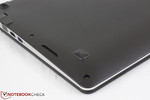
The stereo speakers are located on the left and right hand edges of the notebook with grilles angled towards the desk. Sound quality is good for the size. Treble is not overemphasized to avoid the hollow quality typical of budget notebooks, but bass is of course still unimpressive to those accustomed to larger dedicated speakers. External solutions are recommended for extended playback during movies or music.
Battery Life
A 44 Whr Li-Polymer battery is included with every model with no options for larger capacities. It is essentially identical to that of the VivoBook S550CM. The module, though removable with some careful hands, is not intended for quick replacement. Compared to other 15.6-inch notebooks, the 44 Whr capacity is larger than that of the Aspire V5-571P (37 Whr), smaller than both the budget Lenovo B580 (48 Whr) and Asus Q500A (50 Whr) and only slightly larger than that of the Vaio T15 (43 Whr).
A maximum runtime of about 6.5 hours was recorded on Battery Eater Reader’s Test with minimum brightness, disabled wireless and under the Power saver profile. On the other end of the spectrum, a minimum runtime of about 1.5 hours was recorded on Battery Eater Classic Test with maximum brightness, active wireless and under the High Performance profile. Our more realistic WLAN test puts the notebook on 150 cd/m3 brightness (setting 9/10) while looping our continuous browser script on the Balanced profile. Under these settings, the notebook was able to last for 3 hours and 20 minutes.
At less than 3.5 hours of constant use, the S500CA clocks in with similar WLAN results as both the S550CM and S400CA, but with a much longer maximum runtime than the S550CM. This means that users who can accept lower power settings can realistically expect between 3 to 5 hours of constant use depending on the workload, which may not be reliable enough for all-day usage without a nearby power outlet. This is certainly not bad considering that the much more expensive Tecra R950 lasted for only 4 hours under the same test, though Asus’ own 15.6-inch Zenbook UX51 was able to last for a much more impressive 5+ hours with its larger 70 Whr battery.
Verdict
As a touchscreen-enabled Ultrabook, the VivoBook S500CA creates a strong incentive for buyers due to its low starting price of $699 or even less from some online retailers. Like the recently reviewed Asus Q500A, the S500CA offers a very sleek profile and a reasonable build quality that is hard to come by for the given price range. The user-removable HDD and available SODIMM slot are also excellent for those who want to upgrade the notebook with a dedicated SSD down the line. We see the touchscreen as an added bonus that most users will definitely like having, but its significance in practice will vary widely between users. Hardware-wise, however, we certainly prefer it over the similarly priced Aspire V5-571P.
Users should keep in mind the battery life and display backlight, both of which are only slightly above average. Though sufficient under indoor ambient lighting, this limits the notebook to indoor use despite the slim profile and light weight. The non-removable battery further positions the notebook away from users who travel often and may not have convenient access to grid power.
Beyond the S500CA, users who are looking for a more well-equipped travel companion may want to invest a few more bills on a Zenbook. Those with tighter budgets can opt for the less expensive Asus Q500A, another excellent alternative for indoor use if touchscreen functionality is not a priority.
Even if the VivoBook S500CA may not be perfect for travelers, it retains all the positive qualities we praised about the 13.3-inch S300CA and 14-inch S400CA including the elegant design, good construction, large touchpad, and an overall solid impression that is fit for home use, especially considering the price.




